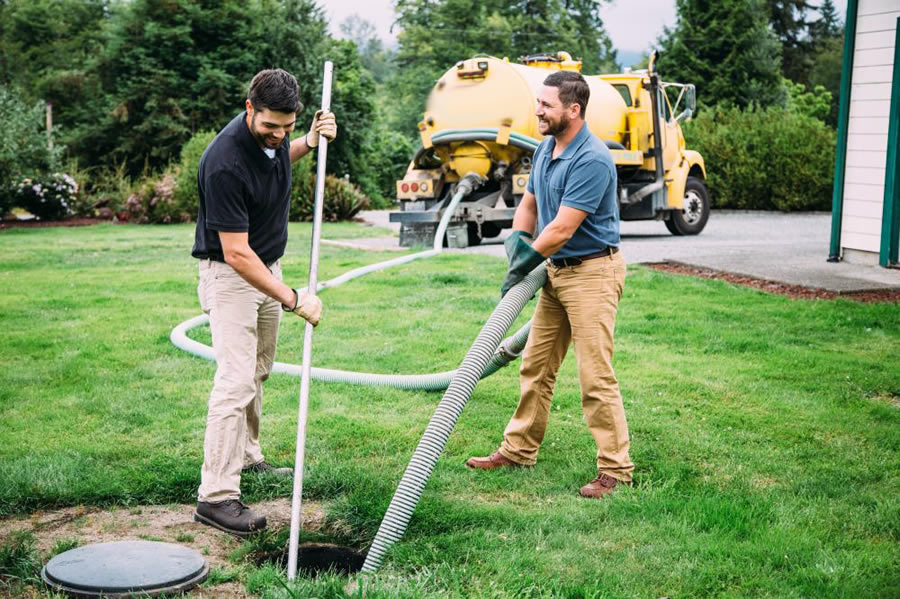Aug 05, 2024
What Materials Are Used in Drain Fields?
In the world of septic systems, the drain field, also known as the leach field, plays a crucial role in treating and dispersing wastewater. Proper maintenance, including regular septic tank pumping, is essential to keep this system functioning effectively. The efficiency and longevity of a drain field is greatly affected by the materials used in its construction.
In this blog post, our professionals from Septic Blue of Raleigh will explore the various materials used in drain fields and why they are essential for a healthy septic system.
The Role of Drain Fields in Septic Systems
Before delving into the materials, it's important to understand the function of a drain field. Upon completion of treatment in the septic tank, wastewater is directed to the drain field for additional purification. This procedure entails the elimination of harmful bacteria, nutrients, and other contaminants as the water percolates through the soil. A well-designed drain field, along with routine septic tank cleaning, ensures that treated wastewater is safely returned to the environment.
Key Materials Used in Drain Field Construction
A variety of materials are used in constructing drain fields, each serving a specific purpose. The selection of materials may be contingent upon the type of septic system, soil conditions, and local regulations.
- Stone and Gravel: In traditional drain fields, gravel and stone are frequently employed. They create a porous layer that allows wastewater to spread evenly across the field. The gaps between the stones provide space for aerobic bacteria to thrive, aiding in the breakdown of organic matter. Regular septic tank pumping ensures that solids do not overflow into the drain field, which can clog the gravel and reduce its effectiveness.
- Sand: In some systems, sand is used as a filtering layer above or below the gravel. Sand filters are particularly effective in areas with high water tables or sandy soils, where additional filtration is needed to protect groundwater. Based on the soil composition and location of your property, a trustworthy septic company can evaluate whether sand is an appropriate addition to your drain field.
- Geotextile Fabric: Geotextile fabric is a synthetic material used to prevent soil from entering the gravel or sand layers while allowing water to pass through. This fabric functions as a barrier, thereby minimizing the likelihood of sediment clogging and ensuring the drain field's functionality. The geotextile fabric's longevity can be guaranteed through proper installation and periodic inspection by a septic tank repair service.
- Piping: Perforated pipelines are employed to ensure that wastewater is distributed uniformly throughout the drain field. These pipes are typically made of PVC or polyethylene and are laid in trenches filled with gravel or stone. The holes in the pipes allow the treated water to seep into the surrounding soil, where it undergoes further natural filtration. Routine septic tank cleaning helps prevent solids from reaching these pipes and causing blockages.
Modern Alternatives and Innovations
While traditional materials like gravel and stone are still widely used, modern innovations have introduced alternative materials that offer enhanced performance and durability.
- Plastic Chambers: Plastic chambers are a modern alternative to gravel-based drain fields. These chambers are less susceptible to clogging and offer a greater surface area for effluent distribution. In addition, they are more lightweight and simpler to install, which makes them a popular choice for new septic tank installation projects.
- Aerobic Treatment Units (ATUs): Aerobic Treatment Units are advanced systems that introduce oxygen into the wastewater treatment process, enhancing the breakdown of organic matter. These units can be used in conjunction with traditional drain fields or as standalone systems. Consult with a septic company to ascertain whether an ATU is an appropriate enhancement for your system.
Need a Reliable Company?
Are you in need of a septic tank installation? Luckily, we at Septic Blue of Raleigh have dedicated workers ready at your service. Contact our representatives for more questions.
